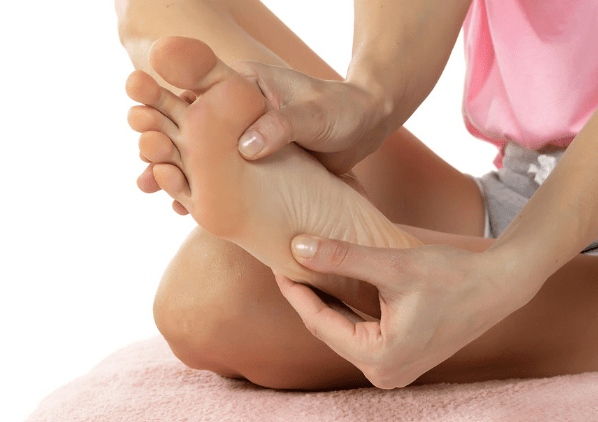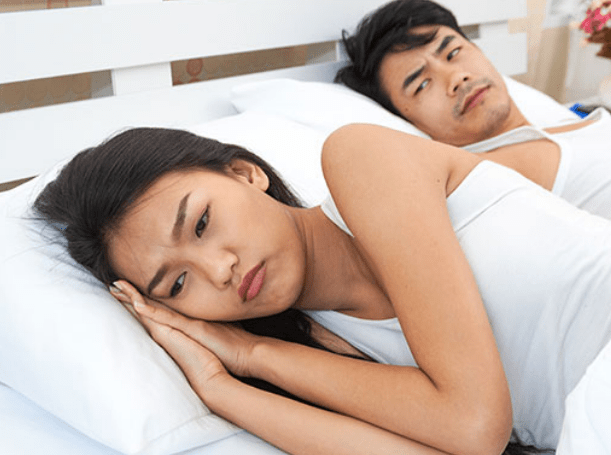Acupressure points for Sleep: Sleep is a crucial component of our overall health and well-being, but millions of people around the world struggle with insomnia and other sleep-related issues. While there are many different approaches to improving sleep, one natural and drug-free option is the use of acupressure. Acupressure is a traditional Chinese medicine technique that involves applying pressure to specific points on the body to promote healing and balance.
5 Acupressure Points for Sleep
In this article, we’ll explore 5 powerful acupressure points that can help you fall asleep faster, sleep more soundly, and wake up feeling more rested and refreshed.
1. Shen Men pressure point (Heart 7)

The Shen Men acupressure point, also known as the “Spirit Gate,” is located on the inner side of the wrist, about 1-2 inches above the wrist crease. This point is believed to help calm the mind, reduce stress and anxiety, and promote better sleep.
To stimulate this point, use your thumb to apply firm, circular pressure for 2-3 minutes. You can do this on both wrists simultaneously. This is one of the most effective acupressure points for Sleep.
2. An Mian (Extra Point)

The An Mian acupressure point is located on the side of the head, just behind the earlobe. This point is said to have a calming effect on the nervous system, helping to induce deep, restful sleep.
To stimulate this point, use your index finger to apply gentle, circular pressure for 2-3 minutes on each side of your head.
3. Nei Guan Pressure Points (Pericardium 6)

The Nei Guan acupressure point is situated on the inner forearm, about 2 inches above the wrist crease. This point is known to help alleviate stress, anxiety, and nausea, all of which can interfere with sleep.
To stimulate this point, place your thumb about 2 inches above your wrist, between the two tendons, and apply firm pressure for 2-3 minutes.
4. Yin Tang (Extra Point)

The Yin Tang acupressure point is located in the center of the forehead, between the eyebrows. This point is believed to have a calming effect on the mind, helping to promote relaxation and better sleep.
To stimulate this point, use your index finger to apply gentle, circular pressure for 2-3 minutes.
5. Zu San Li (Stomach 36)

The Zu San Li acupressure point is situated on the outer lower leg, about 4 inches below the kneecap. This point is known to have a balancing effect on the body, helping to reduce stress and promote better sleep.
To stimulate this point, use your thumb to apply firm, circular pressure for 2-3 minutes on each leg.
The Science Behind Acupressure for Sleep
Acupressure is based on the principles of traditional Chinese medicine, which view the body as a complex network of energy channels (meridians) that need to be balanced for optimal health. By applying pressure to specific points along these meridians, acupressure is believed to stimulate the body’s natural self-healing abilities and restore balance.
When it comes to sleep, acupressure is thought to work by:
- Reducing stress and anxiety: Stimulating points like Shen Men and An Mian can have a calming effect on the nervous system, helping to alleviate the mental and emotional factors that often contribute to insomnia.
- Regulating hormones: Acupressure may help to regulate the production of hormones like melatonin, which is essential for the body’s natural sleep-wake cycle.
- Improving circulation: Stimulating points like Zu San Li can help to improve blood and energy circulation, which is important for overall sleep quality.
Tips for Effective Acupressure for Sleep
- Be consistent: Incorporate acupressure into your nightly routine, as the benefits accumulate with regular practice.
- Experiment with different points: Everyone may respond differently, so try out a few different points to see what works best for you.
- Apply firm, steady pressure: Use your thumb or index finger to apply firm, circular pressure to the points for 2-3 minutes.
- Consider using essential oils: Applying a few drops of relaxing essential oils like lavender or bergamot to the acupressure points can enhance the calming effects.
- Be patient: It may take several sessions before you start to notice significant improvements in your sleep quality.
Combining Acupressure with Other Sleep Strategies
While acupressure can be a highly effective tool for improving sleep, it’s often most beneficial when used in conjunction with other healthy sleep habits, such as:
- Maintaining a consistent sleep schedule
- Creating a relaxing bedtime routine
- Avoiding screens and blue light before bed
- Practicing relaxation techniques like deep breathing or meditation
- Ensuring your sleep environment is cool, dark, and quiet
By incorporating a holistic approach to sleep health, you can maximize the benefits of acupressure and achieve the restful, restorative sleep your body needs.
Conclusion
Incorporating these 5 acupressure points for sleep into your bedtime routine can be a simple and effective way to improve your sleep quality. Remember to be gentle and consistent with the pressure, and be patient, as it may take some time to see the full benefits.
If you continue to struggle with persistent sleep issues, it’s always a good idea to consult with a healthcare professional for further guidance and support.





3 thoughts on “5 Acupressure Points to Help You Sleep Better”